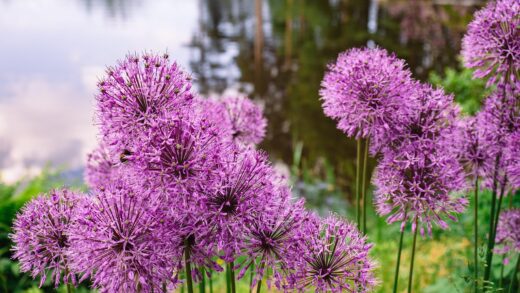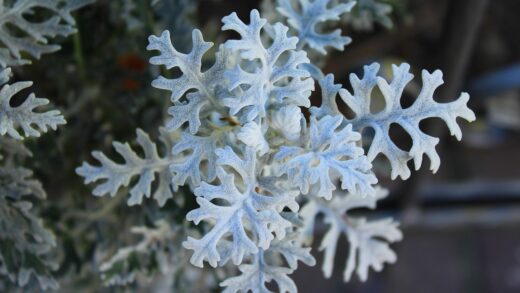Understanding the specific water requirements of elecampane is fundamental to cultivating a healthy and robust plant. This impressive perennial, with its large, lush leaves and towering flower stalks, has a significant demand for moisture, yet it is also susceptible to problems caused by excessive water. Achieving the right balance is therefore crucial, and it involves more than simply watering on a fixed schedule. Proper irrigation strategy takes into account the plant’s stage of development, the prevailing weather conditions, the type of soil it is growing in, and the visual cues the plant itself provides. Mastering the art of watering elecampane ensures it has the hydration needed to support its vigorous growth, from the establishment of its deep taproot to the production of its stunning summer blooms.
Elecampane’s relationship with water is deeply rooted in its natural habitat, where it is often found in damp meadows, along stream banks, and in other areas with consistently moist soil. This preference for moisture is a key characteristic that must be replicated in the garden environment for the plant to thrive. The large surface area of its leaves leads to a high rate of transpiration, meaning it loses a significant amount of water to the atmosphere, especially on warm, windy days. This water loss must be replenished from the soil to prevent stress and maintain turgor pressure, which keeps the foliage from wilting.
The plant’s need for water is not static; it changes significantly throughout its life cycle. Young plants and newly made divisions are the most vulnerable to drying out, as their root systems are not yet fully developed and are confined to the upper layers of the soil. During this critical establishment phase, consistent and regular watering is non-negotiable. As the plant matures, it develops a long, thick taproot that can penetrate deep into the soil profile, enabling it to access moisture reserves that are unavailable to more shallow-rooted plants. This makes established plants considerably more resilient to short-term drought.
Soil type plays a pivotal role in determining how frequently you will need to water your elecampane. Heavy clay soils have a high water-holding capacity and will require less frequent irrigation than light, sandy soils, which drain quickly and dry out much faster. However, clay soils also pose a risk of waterlogging if drainage is poor. The ideal soil is a well-draining loam that is rich in organic matter, as this type of soil retains moisture effectively while still allowing excess water to drain away, preventing the roots from sitting in saturated conditions which can lead to rot.
Ultimately, the most reliable guide to your plant’s water needs is the plant itself, combined with the condition of the soil. Learning to recognize the early signs of water stress, such as a slight drooping of the leaves, and regularly checking the soil moisture with your fingers are the most effective ways to develop an appropriate watering routine. This hands-on approach is far more effective than adhering to a rigid schedule, as it allows you to respond directly to the plant’s immediate needs as they are influenced by the ever-changing environmental conditions.
More articles on this topic
Irrigation during establishment
The period immediately following planting is the most critical time for managing the water needs of elecampane. Whether you have planted a small seedling, a nursery-grown plant, or a new division, its root system is limited and has not yet extended into the surrounding soil. During these first few weeks and throughout the first growing season, the plant is entirely dependent on you to provide consistent moisture to the root ball and the immediate soil area. The goal is to keep the soil consistently moist to encourage the rapid development of new roots, which are essential for the plant’s long-term survival and stability.
A deep and thorough watering immediately after planting is the first and most important step. This initial soaking settles the soil around the roots, eliminating air pockets and ensuring good root-to-soil contact. For the following weeks, you should check the soil moisture every other day, especially in warm or windy weather. The best method is to feel the soil a few inches down; if it is starting to feel dry, it is time to water again. Avoid light, frequent sprinklings, which only wet the surface and encourage shallow root growth. Instead, apply water slowly and deeply, allowing it to penetrate at least 15-20 centimeters into the soil profile.
The frequency of watering during the establishment phase will vary depending on your climate and soil type. In sandy soils, you may need to water every two to three days during dry periods, while in heavier clay soils, once a week may be sufficient. An effective strategy is to use a soaker hose or drip irrigation, which delivers water directly and slowly to the root zone, minimizing evaporation and ensuring deep penetration. This method also has the added benefit of keeping the foliage dry, which helps to prevent the development of common fungal diseases like powdery mildew.
As the season progresses and the plant begins to show signs of active new growth, you can gradually begin to reduce the frequency of watering. This encourages the roots to grow deeper in search of moisture, which is key to developing a drought-resilient plant. However, you must continue to monitor the plant and the soil conditions closely. A single hot, dry spell can quickly stress a young plant, so remain vigilant throughout its entire first year. Consistent moisture during this foundational period is an investment in the plant’s future health and vigor.
More articles on this topic
Watering mature plants
Once an elecampane plant is fully established, typically after its first full year in the ground, its watering needs change significantly. The development of its deep and extensive taproot makes it much more self-sufficient and resilient to periods of dry weather. This taproot can draw moisture from deeper within the soil profile, long after the surface layers have dried out. As a result, mature plants do not require the same constant attention to watering as young ones do. In regions with regular summer rainfall, you may find that established elecampane requires very little, if any, supplemental irrigation.
Despite their drought tolerance, mature elecampane plants will still benefit from occasional deep watering during prolonged droughts or extended periods of extreme heat. Even with a deep taproot, the plant can become stressed under severe conditions. The most obvious sign of this stress is wilting of the large leaves during the afternoon. While the plant may recover overnight as temperatures drop, if the wilting becomes persistent or the leaves start to look scorched at the edges, it is a clear indication that a thorough soaking is needed. When you do water, do so deeply to replenish the moisture reserves throughout the entire root zone.
The principle of deep, infrequent watering is particularly important for mature plants. This practice encourages the root system to remain deep and extensive, reinforcing the plant’s natural drought tolerance. A weekly deep watering during a dry spell is far more beneficial than a light sprinkling every day. A good rule of thumb is to provide the equivalent of about one inch of rainfall per week, either from precipitation or irrigation, during the active growing season. Applying this water slowly allows it to be absorbed by the soil rather than running off the surface.
To further enhance the plant’s ability to manage water, maintaining a layer of organic mulch over the root zone is highly recommended. Mulch acts as a barrier, reducing the evaporation of water from the soil surface and helping to keep the soil temperature more stable. As the organic mulch breaks down, it also improves the soil’s structure and its ability to hold water. This simple practice can significantly reduce the amount of supplemental watering a mature elecampane plant will need, even during a dry summer.
Signs of water stress
Being able to recognize the signs of both underwatering and overwatering is a key skill in successful elecampane cultivation. The most common and easily recognizable sign of underwatering, or drought stress, is wilting. The large leaves will lose their turgidity and begin to droop, particularly during the hottest part of the day. While this can be a temporary response to high temperatures, if the leaves do not perk up in the cooler evening hours or remain wilted in the morning, it is a definitive sign that the plant is thirsty and in need of a deep and immediate watering.
Other, more subtle signs of underwatering can develop over time. If the plant is chronically dehydrated, its growth may be stunted, and the leaves may start to turn yellow or brown, particularly around the edges and tips. The lower leaves are often the first to be affected as the plant prioritizes sending water to the newer growth. In severe cases, the plant may prematurely drop its leaves and fail to produce flowers, or the flowers it does produce may be smaller than usual and fade quickly. Recognizing these symptoms early can help you correct the issue before it causes long-term damage.
Conversely, overwatering can be just as detrimental, if not more so, than underwatering. The primary danger of excessive moisture is root rot, a condition where the roots are deprived of oxygen in waterlogged soil and begin to decay. The above-ground symptoms of overwatering can be surprisingly similar to those of underwatering. The leaves may wilt and turn yellow, but in this case, it is because the rotting roots are no longer able to absorb water and nutrients to send to the rest of the plant. The key difference is that the soil will be consistently wet or soggy to the touch.
If you suspect overwatering, the first step is to cease all irrigation and allow the soil to dry out. Improving soil drainage is the long-term solution. This may involve amending the surrounding soil with organic matter like compost or grit to improve its structure. In severe cases of waterlogged soil, you may need to carefully dig up the plant, inspect the roots, trim away any soft, brown, or mushy sections, and replant it in a better-draining location or an improved soil mixture. Prevention is always the best course of action, so ensure good drainage from the outset.
Advanced watering techniques
Beyond the basics of when and how much to water, several advanced techniques and considerations can help you optimize moisture management for your elecampane. One of the most effective strategies is improving the water-holding capacity of your soil. This is achieved primarily through the regular addition of organic matter. Compost, leaf mold, and well-rotted manure act like sponges in the soil, absorbing water during rainfall or irrigation and then releasing it slowly to the plant’s roots over time. A soil rich in organic matter provides a much more stable moisture environment and acts as a buffer against both drought and excessive rainfall.
The strategic use of mulch is another cornerstone of efficient water management. Applying a 5-10 centimeter layer of organic mulch, such as wood chips, straw, or shredded leaves, over the soil surface around the plant yields multiple benefits. The mulch layer dramatically reduces the rate of evaporation, keeping the soil moister for longer after watering. It also prevents the soil surface from crusting over, which improves water infiltration. Furthermore, mulch helps to suppress weeds that would otherwise compete with your elecampane for available water, making it a simple but powerful tool for water conservation.
Creating a watering basin, or well, around the base of the plant can also improve irrigation efficiency, especially for new transplants. After planting, use the displaced soil to build a circular berm or ridge a short distance out from the plant’s stem. This shallow basin acts as a reservoir, holding the water you apply and allowing it to soak slowly and deeply into the ground directly over the root zone, rather than running off across the soil surface. This technique is particularly useful on sloped ground and ensures that every drop of water is delivered where it is needed most.
For larger plantings or in particularly dry climates, consider installing a drip irrigation or soaker hose system. These systems are highly efficient as they deliver water slowly and directly to the soil at the base of the plants, resulting in very little water loss to evaporation or runoff. They can be placed under the mulch layer for maximum efficiency. While they require an initial investment of time and money to set up, they provide a precise and consistent method of watering that can save a significant amount of water and effort in the long run, ensuring your elecampane receives the perfect amount of moisture to thrive.




















